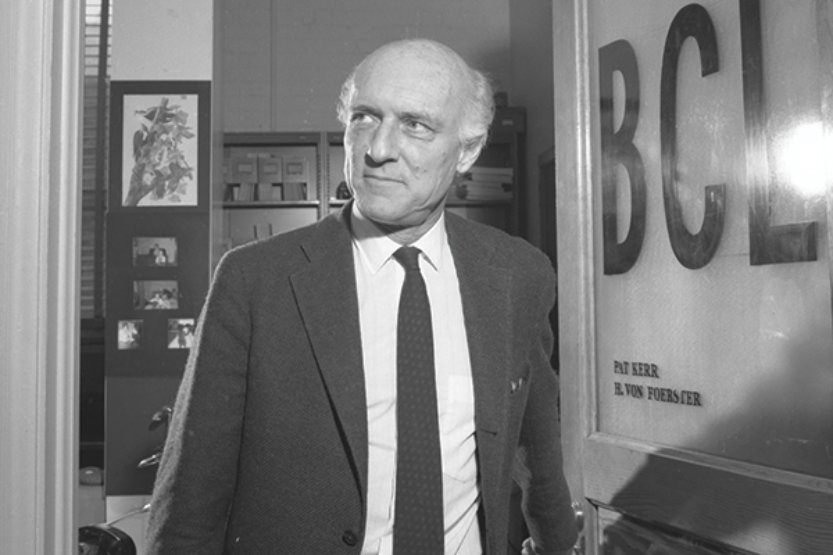Ingenious: The magician of BCL
 U of I Electrical Engineering Professor Heinz von Foerster encouraged a multidisciplinary approach to research.
U of I Electrical Engineering Professor Heinz von Foerster encouraged a multidisciplinary approach to research. When Heinz von Foerster was a child in Vienna, his grandmother hosted artists, philosophers and politicians, and von Foerster soaked it all in.
He brought that same multidisciplinary spirit to Illinois in 1949 as an electrical engineering professor, and in founding the University’s Biological Computing Laboratory in 1958. The BCL became the nerve center of the cybernetics movement, and von Foerster was one of its leading voices. “Cybernetics is the science of communication and regulation,” says Stuart Umpleby, ’67 ENG, ’67 LAS, MA ’69 LAS, PHD ’75 MEDIA, who studied under von Foerster.
In 1974, von Foerster developed a “second order of cybernetics,” which stressed the subjective involvement of the observer.
“Somebody has to formulate the hypothesis, and conduct and interpret the experiment. All of this is done by observers,” Umpleby says. “Most science is based on the assumption that you can remove the observer to get objective statements. Without observers, there would be no science.”
Von Foerster believed that philosophy and the liberal arts should be brought in with engineering and other hard science studies, and BCL reflected this approach.
“Von Foerster was a performer,” Umpleby recalls—a trait that came from his youth, when he performed magic. “His style of presentation was like pulling a rabbit out of a hat. He’d make you think he was going one direction, and in the end, he would come up with a different conclusion.”
BCL closed its doors in 1975, when von Foerster retired and funding dried up. But he is perhaps still best remembered for his tongue-in-cheek “doomsday formula.” In 1960, he developed a mathematical model that projected that by Nov. 13, 2026 (his birthday), the world’s population would reach infinity, with everyone “squeezed to death.”
The controversial “doomsday” article appeared in Science magazine, receiving international attention, and von Foerster gave a follow-up interview to the magazine in response. His witty and insightful remarks “were a joy to read,” Umpleby says. “He was back to pulling a rabbit out of the hat again.”
Sources: Stuart Umpleby; U of I Archives; and “‘Nerve Center’ of the Cybernetic World,” by Jamie Hutchinson.

